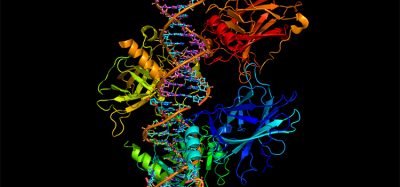Are female mice better protected against obesity?
Posted: 26 July 2023 | Izzy Wood (Drug Target Review) | No comments yet
The University of California underwent a mouse study disclosing underlying sex differences in mice for obesity.

Associated with poorer mental health outcomes and reduced quality of life, obesity is on the rise in the United States. Currently, more than 30 percent of American adults are classified as obese. A risk factor for several diseases, including diabetes, cardiovascular disease, and COVID-19, obesity is an important and growing public health concern.
Using a mouse model of high fat diet-induced obesity, a team of scientists at the University of California, Riverside, US, has found that female mice are protected against obesity and inflammation, compared to males, because they secrete more of an immune protein called RELMalpha.
“Our study identifies immune cells and RELMalpha in causing these sex-specific differences in the immune response to obesity,” said Meera G Nair, Associate Professor of Biomedical Sciences in the School of Medicine, who co-led the study published in eLife with Djurdjica Coss, Professor of Biomedical Sciences.
RELM, or resistin-like molecules, constitute a family of proteins secreted by mammals that are highly expressed in infectious and inflammatory diseases. One of these proteins, RELMalpha, is quickly triggered in the mouse body following infection and serves to protect the body’s tissues.
“RELMalpha regulates two immune cell types: the anti-inflammatory macrophage and the eosinophil,” Nair said. Macrophages and eosinophils are types of disease-fighting white blood cells but can be damaging to the body in the absence of infection.
“In contrast, males expressed less RELMalpha, had less eosinophils, and had inflammatory macrophages that promoted obesity.”
When the researchers deleted RELMalpha in female mice, they found the mice were no longer protected from obesity, had fewer eosinophils, and had inflammatory macrophages.
“However, we were able to reduce obesity in these female mice by treating them with eosinophils or with RELMalpha, suggesting promising therapeutic targets,” Nair explained. “We are the first to map this pathway in females that protects against obesity.”
The research team found RELMalpha deficiency had significant effects in males also, but to a lesser extent than females.
“In our experiments, female mice had higher levels of RELMalpha than males, which likely explains why RELMalpha deficiency affected females more than males,” Coss added. “The implications of our study are that consideration of sex differences is critical to tackle metabolic diseases such as obesity.”
According to Nair, the study is novel in showing a previously unrecognised role for RELMalpha in modulating metabolic and inflammatory responses during diet-induced obesity that is sex dependent.
“Our results highlight a critical ‘RELMalpha–eosinophil–macrophage axis’ that functions in females to protect from diet-induced obesity and inflammation,” Nair concluded. “Promoting these pathways could, therefore, provide novel therapies for combating obesity.”
Related topics
Animal Models, Disease Research, Protein, Protein Expression
Related conditions
Cardiovascular disease, Covid-19, Diabetes, Obesity
Related organisations
University of California Riverside
Related people
Meera G Nair







